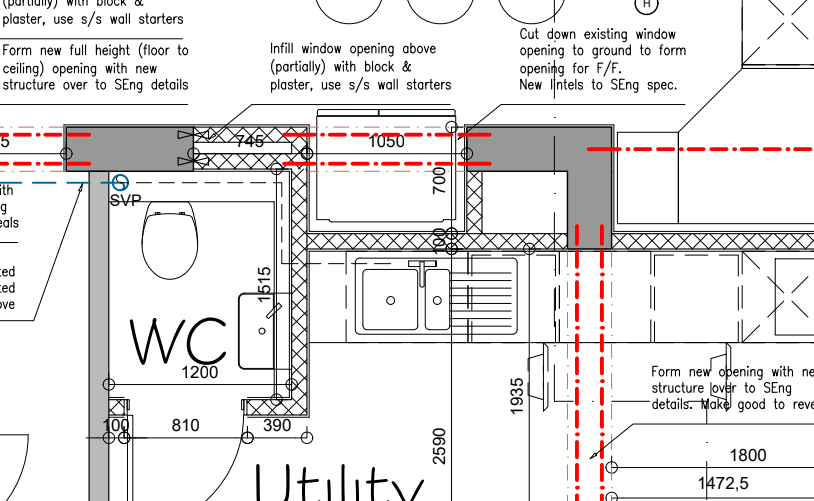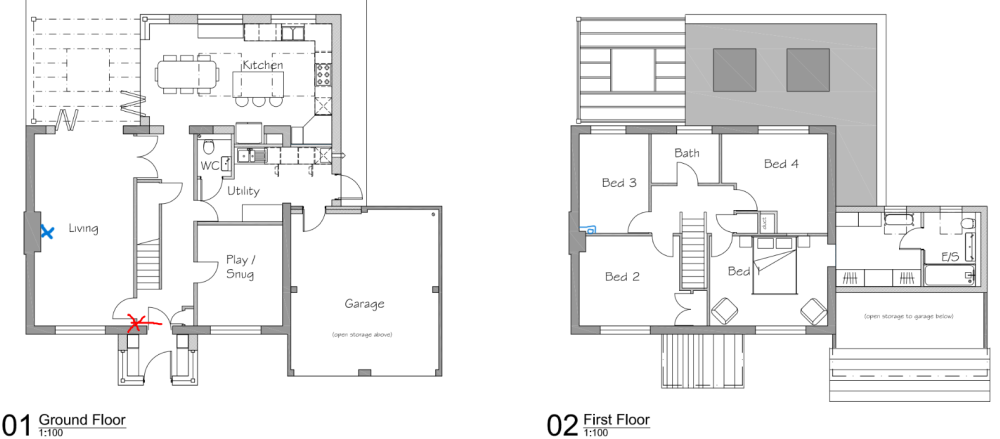
MarkyG82
Members-
Posts
34 -
Joined
-
Last visited
Personal Information
-
Location
Hampshire
Recent Profile Visitors
The recent visitors block is disabled and is not being shown to other users.
MarkyG82's Achievements

Member (3/5)
0
Reputation
-
@JohnMo Thanks. The boiler selection is based on what the plumber is supplying. I will question that as it may help like you suggest. The smart bit is definitely a want but it will allow us to zone off the upstairs. We like a cold bedroom. I'm happy to set up remote sensing. I already have stuff in the house that will do it. Just needs setting up in home assistant. Are you suggesting that a well set up opentherm boiler will put perform the weather compensation hack as per the plumbers suggestion?
-
Need to choose one of two system boilers (Worcester 4000 or glow worm energy 7). I want modulation for all the obvious reasons. I also want smart controls so we can add smart TRVs upstairs to zone off the area. Currently not possible to zone it the manual way due to existing plumbing. So I've come up against the issue that neither boilers are opentherm and the thermostats we like (tado or nest) don't modulate without it. Plumber has done some homework and thinks that adding weather compensation will take care of the modulation while allowing the smart controls to call for heat via relay. Two questions to you knowledgeable folk: 1) Is my plumber right? 2) Will the call for water cylinder heating also be affected by said weather compensation? On point 2, the glow worm has a heat setting Dedicated to hot water if that makes a difference. Last question: 3) Do you know of a smart thermostat system (with TRVs) that can natively modulate central heating output using the above boilers? Thanks
-
@BotusBuild thanks. I think I will put effort into the insulation and ceiling. Pretty sure I've figured out that I can do the work around the edges and doors first. That way I have a more organised space to be able to get to the ceiling.
-
Apologies for resurrecting this thread. Keeps related info in the same place and reduces the number of things to look through. I am in the same boat and was planning to put a small amount of insulation between the floorboards and the ceiling skin. The aim is to improve comfort, noise insulation (in and out) and finally to help reduce heat loss from the house due to it being a joined garage. Am I being excessive by wanting insulation or is this a worthy endeavour? I will put effort into the front garage doors, floor and last remaining single skin wall. Will that be enough to help control sound and heat with a basic boarded space above? I guess I could insulate and skin at a later date if needed.
-
Our gap is extra wide to accommodate the doors thankfully.
-
Thanks @Kelvin. We don't know which one we are getting yet as the kitchen supplier didn't have many options we liked. It'll be freestanding in the hole so no cabinets to integrate into. Thinking about it now, the height of the hole will be dictated by the existing lintel. As long as the new fridge is enough shorter than that it should be fine. A quick google suggests the difference is enough to create a gap. Must remember not to fill it with stuff!!! Maybe a stylish fill panel with grill would work.
-
Our design currently has an enclosure for the fridge created by the existing window. As a result it will be in it's own pocket with ~50mm gap all round. Will this cause an issue with the fridge or should we add some sort of vent or even open up the space above? The space is side onto the new WC which will have extraction ducted out. Could we put a small vent from the fridge space into there for the heat to escape or am I over thinking it?
-
Thanks all. @JohnMo by don't do both I'm assuming you mean don't do PIV and dMEV together. A couple of articles I read suggested doing them together. I guess it's a way of controlling what air is coming in and gives the option for filter and heat? I trust your input though. dMEV units are inexpensive to fit so I think that's the way we'll do rather than MVHR.
-
I'm coming back round the houses (pun intended) with the whole ventilation thing. BC have commented that we need extract from the ground floor WC (not external walls) and the upstairs wet rooms need new ventilation. My plan all along was to retrofit MVHR. I try to put my money where my mouth is and do things right for all (PV, EV, etc.) and I thought MVHR was the right thing as it would rescue some of the heat lost while still offering some nice fresh air. I'm now considering dMEV as it's dramatically cheaper and easier to install. Then combine it with a positive pressure inlet it basically creates a modular MVHR without the R. Long way of asking: how does a dMEV property cope with heat loss through the ventilation? I don't want to go running the heating only to have it all sucked out by the vents. We also sleep year round with the windows open but was hoping the MVHR would put a stop to that with the fresh supply. Thinking out loud moment: with the relatively low cost of dMEV, could I install that then swap out to MVHR later if it's not enough?
-
I'm interested in this for a slightly different reason. Planning on capping the chimney to seal it to the elements and maybe even use it as a conduit for ventilation ducting. At what point (vertically) should I add a further barrier? You have chopped yours off. Did you seal the top in any way? I'm thinking of one of those inflatable jobs but nearer the top (accessed via loft space) so the cold region is limited to above the living spaces. I'm probably nuts!!
-
Basic component and setup Q's
MarkyG82 replied to MarkyG82's topic in Mechanical Ventilation with Heat Recovery (MVHR)
The extension/build design. Not talking about the MVHR design. Apologies if I'm confusing you. -
Basic component and setup Q's
MarkyG82 replied to MarkyG82's topic in Mechanical Ventilation with Heat Recovery (MVHR)
The design is not based around MVHR and there is currently a plan to have a single extractor fan in the WC that is to handle both WC and utility. I was planning on using that point as the MVHR extract for that area. So you are saying that with MVHR I would need extracts in both WC and and utility. I don't think this would be an issue. Just more expensive in ducting and need to have a think about the site of the utility point. I guess as close to the back door as possible to get the area covered by cross flow. -
Basic component and setup Q's
MarkyG82 replied to MarkyG82's topic in Mechanical Ventilation with Heat Recovery (MVHR)
So the current design has a single extractor in the WC to handle that and utility. Along with an extract hood in the kitchen. Planning on leaving the kitchen hood in place as it'll only ever run for minutes at a time. Just need to make sure it has adequate flappy plate things. The WC extractor I was going to use as the extract from the mvhr. Only thing I hadn't considered was the flow through the wall in the snug. What benefit would that bring over a supply? The airing cupboard straddles that wall below the "U" of utility. That's the route for ducts that side of the house. -
Basic component and setup Q's
MarkyG82 replied to MarkyG82's topic in Mechanical Ventilation with Heat Recovery (MVHR)
For clarification here is a diagram of what I'm intending. The duct would come down from the loft - through bed 3 - out of the ceiling in the living room above the TV. -
Basic component and setup Q's
MarkyG82 replied to MarkyG82's topic in Mechanical Ventilation with Heat Recovery (MVHR)
So I think I've come up with an idea for the living room supply. What are the thoughts on boxing in ducting? The supply could run next to the chimney breast in bed3 and come out of the ceiling in front of the fireplace in the living room. I need to measure the wall placements but it's possible it could drop to the centre of the wall to be symmetrical. That's a detail to figure out later. The duct could then be boxed in as it passes thorough bed3 and it would end up looking like part of the chimney breast. That supply would be above the TV and opposite the sofa (TV over the fireplace). With supplies in the hallway (by the front door) and one in the play room. Then extracts in the kitchen and utility. Would the supply location be acceptable? Would we even need one in the hallway? We are likely to be supply heavy upstairs anyway.


